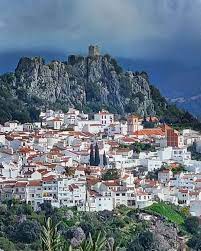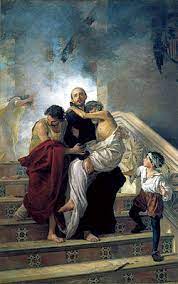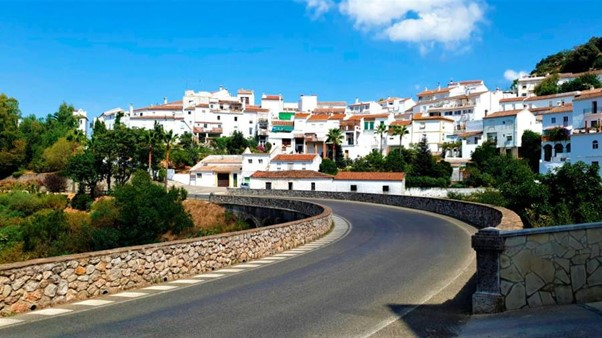GAUCIN - El Balcon de la Serrania

First village of the Serrania de Ronda on the road from Gibraltar to Ronda. Located in the Genal River Valley it stretches across the hill between the Sierra del Hacho and the Castillo del Aguila where you can enjoy breathtaking views of the Genal River, Gibraltar and the Coast of Africa.
Gaucin is a village with streets of Arabic design and white houses, many of which have exquisite handmade railings and balconies. Its monuments include the Church of San Sebastian, the Convent of Carmelitas and the Fuente de los Seis Caños in the square.
HELP ME RONDA owner Paul Whitelock looks back to 2009 when he worked for The Olive Press newspaper. He recalls a successful supplement on Gaucín which the paper published that summer.

July 2009
The Olive Press, the paper I write for, has received a huge response to its recent pull-out ‘special’ on Gaucín, el Balcón de la Serranía.
Readers from the town, from the rest of Andalucía and visitors to our website have praised the content, the photography and the quality of the writing. One reader has even sent us a couple of interesting stories about this very pretty pueblo blanco, located in the very south of the Serranía de Ronda.
Advertisers are delighted with the profile The Olive Press has given them and are booking more adverts with the main paper as we move into the key autumn period.
Serafina Clarke, a retired literary agent who has lived in Gaucín for donkey’s years, is an avid reader of the paper. She wrote: “I love The Olive Press. It’s the only decent English read we get around here. I thought the ‘special’ on Gaucín was very good, although you might have covered two interesting little stories about the town, which I’m sure your readers would have loved.”
We agree. Serafina has kindly sent us the two stories which we are delighted to reproduce below. They are about The Hitler Bridge and St John the Divine.
The Olive Press ‘specials’, be they on a geographical area or on a theme, are designed to be informative and interesting for readers, but also to give potential advertisers a chance to try us out. They are successful on both counts. ‘Specials’ this year so far on Jerez de la Frontera, Alcalá La Real, Coín, Vejer de la Frontera and now Gaucín have been particularly popular.
Readers have enjoyed the content. “The supplement on Vejer de la Frontera made me want to go there immediately”, said Julie.
James wrote: “On the strength of the Alcalá La Real ‘special’ eight of us went there for the weekend and had a great time!”
Jesus appears in Gaucín
By Serafina Clarke

Gaucín has welcomed many famous visitors over its long history. Nobody quite compares, however, to one alleged 16th Century visitor.
The town’s motto, ‘Balcony of the Ronda Mountains, where the Holy Child appeared to St John the Divine: the illustrious, always noble, very hospitable village of Gaucín’ identifies the mystery man as Jesus Christ.
According to the Roman Catholic Church a young Jesus appeared to a holy man as he travelled the area around Gaucín. This man, John, worked in the region selling religious books and pictures to people in the small villages locally. It was during this work that he claimed to have seen a vision of the young Jesus Christ. Through this revelation Jesus bestowed the name John the Divine and instructed him to go to Granada.
Following this advice the newly-named John the Divine made the journey. Once there he opened his home to the needy and devoted his life to the care of the poor, the homeless, the sick and the dying.
John came into the world as João Cidade in Portugal in 1495. John the Divine was born to pious parents and became a central figure in the history of Christianity in Spain. Seen by many as a madman, he battled a history of mental health problems and for a period of time was a psychiatric patient in the Hospital Real de Granada.
John the Divine was canonised as a saint in 1690 and in the 19th Century he was made patron saint of hospitals and the dying by Pope Leo XIII.
The Basilica of St John the Divine in Granada is home to a wooden chest that contains the saint’s relics. It is now a hospital for sexually transmitted diseases.
The Hitler Bridge
By Serafina Clarke

Hitler Bridge, Gaucín
The bridge which now carries the main road, the A369, around Gaucín, was built by Adolf Hitler in the late 1930s. It was constructed, with General Franco’s agreement, for the purpose of moving German troops down to Gibraltar to invade the British enclave, once the Nazis had conquered Britain.
Gibraltar had been ceded to Britain by the Treaty of Utrecht in 1713 following the War of the Spanish Succession. The deal in 1936 was that Hitler would give Gibraltar back to Spain in return and because he still hoped to involve the Spanish dictator in the Second World War.
Note: Serafina Clarke sadly passed away on 2 May 2017 aged 83. Her obituary appeared in The Times: “CLARKE Serafina (née Ingham) died peacefully on 2nd May 2017, aged 83, at home in her beloved Gaucín, Spain. Mother of Susie, grandmother of William and Charlie Costello.”


